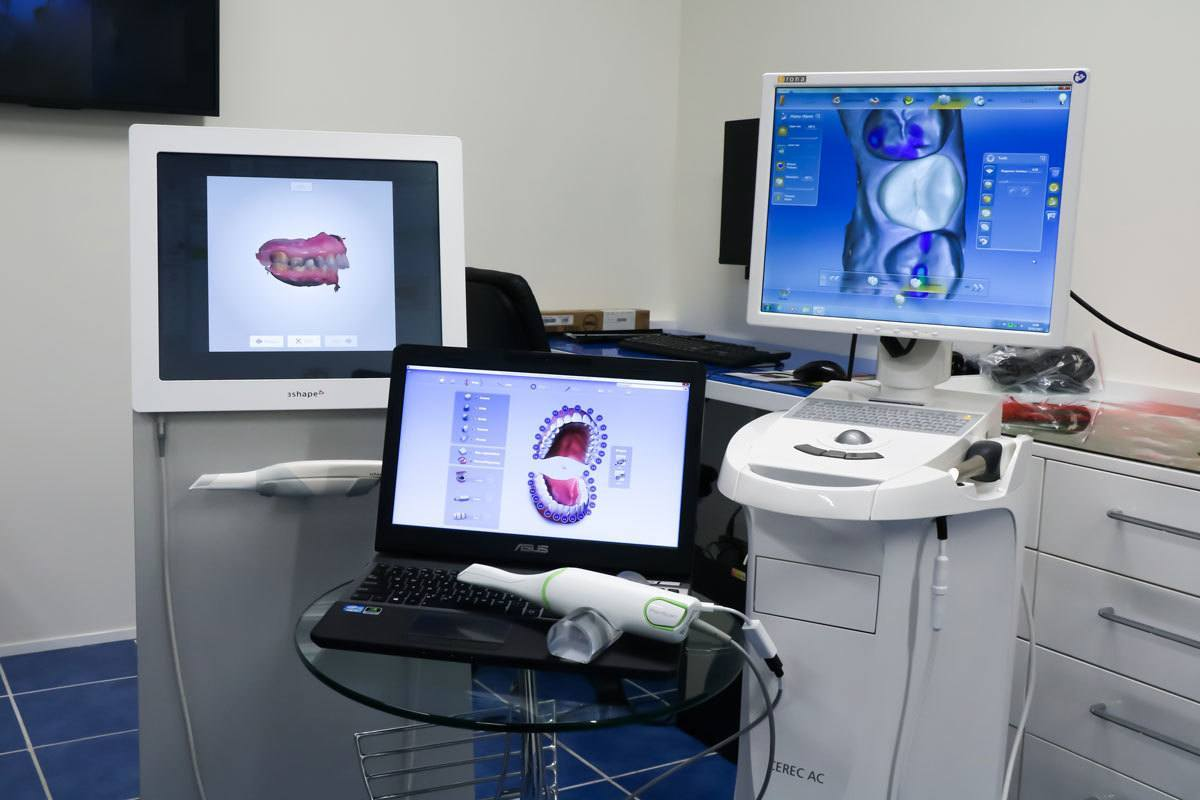Have you ever thought of investing in CAD/CAM technology and the benefits it can bring to your dental practice?
Are you concerned with stories of frustration and technical issues surrounding this new technology?
How reliable is it really?
These are all questions that we asked ourselves incessantly during our journey in digital dentistry which started close to a decade ago. Our clinic started as a humble 2 chair practice which mainly focussed on simple drill and fill dentistry. We invested in CAD/CAM in 2010 at a time when the technology was in its infancy.
Unfortunately at this time training was sparse and of poor quality as very few dentists had experience in these novel techniques. This was made worse by the promises by company reps and the high expectations of CAD/CAM that were often not met.
Early CAD/CAM systems left much to be desired. The hardware and software were still developing and of much poorer efficiency to what it is now. Slow and cumbersome, it was incredibly difficult to achieve good results as a beginner, especially with little or no formal training. It is at this time that many of the horror stories of CAD/CAM developed as early adopters felt cheated as the systems they had purchased (not cheap) failed to deliver.
Frustrated as we tried to make this technology work, we wanted to quit many times and go back to traditional techniques of messy impressions and waiting for lab made crowns. Seeing the value in CAD/CAM we remained persistent and largely by trial and error developed the skills to master single-day crown restorations.
It is important to remember that this was close to ten years ago. Much like how composite has evolved significantly over the years and is now a radically different product to its initial release, this is also true with CAD/CAM. This technology is more powerful than ever before and the systems more rigorous and fleshed out.
The scope has also increased significantly to include almost every aspect of dentistry. Initially, these systems focussed on single crowns, but now multiple units, implant restorations, smile design and even full-mouth rehab is possible with the right skills. There is even prototype software for the fabrication of dentures and removable prosthetics.
Over the years our drive for the latest technology was insatiable. We in 2010 started with the second generation E4D system (now known as Planmeca) and have since purchased their latest (4th generation) Emerald scanner. We have also been using the latest CEREC and 3 Shape Trios systems in our practice for a number of years. Having all three systems gives us some key insights on the very real pro’s and con’s of each system and where each system excels - something that reps that are trying to sell you a system neglect to mention.
Digital dentistry has changed our practice and as a result, our clinic has grown from 2-chairs to 7 and although not directly caused by buying a CAD/CAM machine and sitting it in the practice (we wish it was that easy), CAD/CAM has undoubtedly played a major role in this transition.
As they say, you can’t sell what you don’t own, and if you do not invest in CAD/CAM you cannot reap the rewards of a single-day fixed prosthesis and an increased scope of practice. From drilling and filling to more complex full mouth rehab and smile design cases is what CAD/CAM and digital dentistry as a whole helped us to achieve.
Although we have seen great advances in the technology, unfortunately in New Zealand the training has not followed suit. Most training is carried out by suppliers which are generally brief and run by reps who have never carried out the workflow on real patients. Although their information is valuable, there is a clear difference between theory and practice.
This is what lead to the formation of the Institute of Digital Dentistry. There is a clear lack of quality dental education (especially in New Zealand) focusing on digital dentistry and the CAD/CAM workflow.
We want to help you bypass all the years of practice (expensive lessons) it took us to master CAD/CAM and fast track your learning to be able to reap the benefits in your own practice in a fraction of the time.
Digital dentistry and CAD/CAM is without a doubt the future of dentistry. The technology is now very much mainstream and should be part of every dental practice.


aaaaw! this is awesome, technology is growing so i would love not to be left behind, i want to be part of IDD too
This article is so helpful and life changing to me, my mindset is different now. Thank you so much Dr. Ahmad. I really appreciate
Technology is moving very fast, very well articulated. Thanks for Sharing